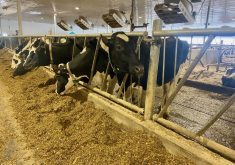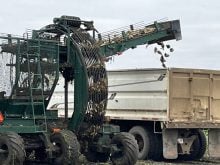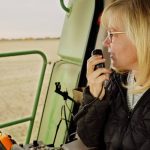Herbs take more experimentation than wheat when trying to figure out the best way to grow a crop.
Herb grower and trader Wanda Wolf of Phippen, Sask., told the Jan. 13 meeting of the Saskatchewan Herb and Spice Association in Saskatoon that people who want to get started in this niche business should not begin by planting acres.
Producers should grow a few rows of herbs in their garden first, she suggested, which helps them learn the crop’s unique characteristics and gives them a better idea about when and what to harvest.
Read Also

Accurate accounting, inventory records are important
Maintaining detailed accounting and inventory records is not just a best practice; it’s a critical component of financial health, operational efficiency and compliance with programs like AgriStability.
Growers should also analyze their land. Rocky soil is not suitable for root crops but may be fine for a herb that is harvested for its leaves, flowers or seed.
She said growers should consider organic production because 80 percent of her buyers want that type of product.
Organic produ-ction means testing water used for irrigation and ensuring a 12 metre buffer between the organic herb patch and the rest of the farm if it is sprayed.
She urged would-be growers to use equipment when cultivating and harvesting on a commercial basis. Otherwise, Wolf said, “you may as well work at Wal-Mart. You’ll get a nice tan but that’s it from hand hoeing.”
Quality is also important. Echinacea roots should be washed free of clumps of soil. Borage plants should have a bright blue flower, not dried to a dingy grey.
When washing herbs, the last rinse should include hydrogen peroxide to kill bacteria and fungus.
Improper drying can cost producers their entire season. Indoor dryers are the best way to control air movement, humidity, light and temperature. Wolf advised turning herbs regularly and checking for mould.
Marketing is the final stage. Producers should make arrangements with a buyer when they seed their crop. If not, they should be prepared to spend time on the internet, attend trade shows and contact herb associations and brokers.
Wolf said she is spending less time working as a broker this year so she can concentrate on raising herbs in volume to show other farmers how it can be done.
“The paperwork to cross the American border is the same three hours for 10 tonnes of herb as for 50 pounds,” she said when outlining why she wants to see larger quantities produced.
While buyers are looking for specific kinds of herbs, Wolf said farmers can use their imaginations to expand that list.
She used shepherd’s purse and cleavers as examples. They are desirable organic herbs that most commercial farmers want to kill.
Also, dandelions were grown in Germany during the Second World War for the latex in their sap, which was used as a rubber substitute.
“It’s all in perception and what you see in plants. The world is changing.”














